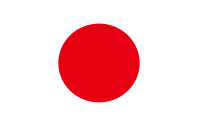新托福阅读修饰目的题的解决策略
2015年05月07 10:05 作者: 来源: 1915人浏览
1、修辞目的题的两种考察形式:
在阅读考试中,这类题目有两种不同的考察形式:一种是给出修辞手段问目的,另一种是给出修辞目的问手段。
其常见的题目形式如下:
The author uses X as an example of…Why does the author mention X?
Why does the author compare … to …?
Why does the author use the word … in discussing…?
The author discusses X in paragraph X in order to…The author uses X as an example of…2、解题技巧找出这些修辞方法所用的关键词,例如定义中所用的同位语;描述事物大小、形状的形容词和名词;举例用的词,如,for instance,for example, in other words;用来解释的词语,如because, this is why, due to等。
我们来看一个例子:
One of the most puzzling aspects of the paintings is their location. Other rock paintings,for example, those of Bushmen in South Africa are either located near cave entrances or completely in the open. Cave paintings in FranceandSpain, however, are in recesses and caverns far removed from original cave entrances.
Why does the author mention Bushmen inSouth Africain paragraph 2?
To suggest that ancient artists from all over the world painted animals on rocksTo contrast the location of their rock paintings to those found at LascauxTo support the claim that early artists worked in cramped spacesTo give an example of other artists who painted in hidden locations首先分析问题题目,找出其中的关键词:Bushmen in South Africa.之后回到原文看其前后的句子,找到原文的关键词for example,通过分析知道,这一例子的目的是为了说明它前面的那句话,即这些绘画的位置令人费解。作者以对比的手法来说明这一点:Bushmen in South Africa的绘画常位于洞口或洞外,而法国和西班牙的洞穴绘画(本文所说的绘画)却位于远离最初洞口的深处。由此可见,Bushmen in South Africa的例子是为了说明Lascaux绘画位置的怪异。第二个选项符合此意,为正确答案。
总之,解决这类问题的步骤可以总结为:分析问题题目找出关键词,返回原文找原文中的关键词,理解上下文得出答案。
相关文章推荐
- 新托福阅读中指代关系题的解决策略2015/05/07
- 托福阅读表格题目解决策略2013/01/06
- 寒假备考:托福阅读应以高分为目的2015/01/30
- 托福阅读如何正确打开应考方式2017/05/22
- 托福阅读不得不知的8个考点2016/12/20

















